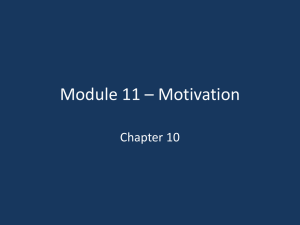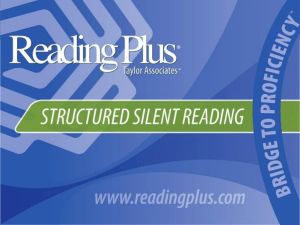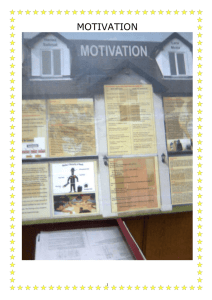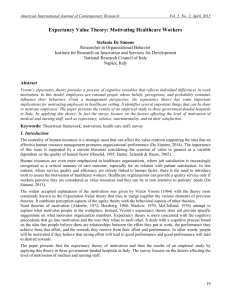Test_2_Review - North Iowa Community School District
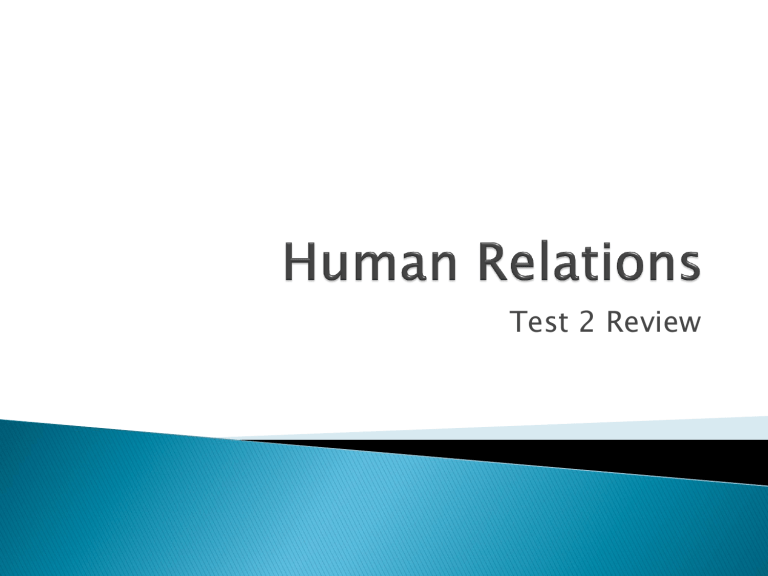
Test 2 Review
1. Happiness is directly proportional to a person's age.
True False
1. Happiness is directly proportional to a person's age.
True False
2. Feeling hopeless leads to feeling helpless, which leads to giving up.
True False
2. Feeling hopeless leads to feeling helpless, which leads to giving up.
True False
3. A person with a positive attitude is more likely to have an external locus of control than a person with a negative attitude.
True False
3. A person with a positive attitude is more likely to have an external locus of control than a person with a negative attitude.
True False
4. When someone else controls your choices, either large or small, your happiness will probably increase.
True False
4. When someone else controls your choices, either large or small, your happiness will probably increase.
True False
5. Good working conditions are sufficient to create high job satisfaction among employees.
True False
5. Good working conditions are sufficient to create high job satisfaction among employees.
True False
6. Organization citizenship behavior is an attitude of willingness to go above and beyond the behaviors that are generally associated with life in a workplace.
True False
6. Organization citizenship behavior is an attitude of willingness to go above and beyond the behaviors that are generally associated with life in a workplace.
True False
7. Self-esteem is the worth or importance you attach to different factors in your life.
True False
7. Self-esteem is the worth or importance you attach to different factors in your life.
True False
8. Values exist not only within individuals, but in organizations as well.
True False
8. Values exist not only within individuals, but in organizations as well.
True False
9. Instrumental values help you reach your goals, while terminal values are those goals.
True False
9. Instrumental values help you reach your goals, while terminal values are those goals.
True False
10. Which of the following is a characteristic that most happy people have in common?
A. A challenging occupation
B. A wealthy lifestyle
C. A belief in destiny
D. An outgoing personality
10. Which of the following is a characteristic that most happy people have in common?
A. A challenging occupation
B. A wealthy lifestyle
C. A belief in destiny
D. An outgoing personality
11. An effective climate allows people to work to their full potential without becoming a threat to others.
True False
11. An effective climate allows people to work to their full potential without becoming a threat to others.
True False
12. Maslow's hierarchy of needs theory of motivation assumes that when a need has been satisfied, it will no longer motivate the person's behavior.
True False
12. Maslow's hierarchy of needs theory of motivation assumes that when a need has been satisfied, it will no longer motivate the person's behavior.
True False
13. McClelland feels that someone with a strong affiliation need will generally make the best manager.
True False
13. McClelland feels that someone with a strong affiliation need will generally make the best manager.
True False
14. According to Herzberg's two-factor theory, hygienes are factors that workers do not want to go without.
True False
14. According to Herzberg's two-factor theory, hygienes are factors that workers do not want to go without.
True False
15. High self-esteem is the greatest motivator of all.
True False
15. High self-esteem is the greatest motivator of all.
True False
16. _____ refers to the "emotional weather" within an organization that reflects the norms and attitudes of a company's culture and that affects worker morale, attitudes, stress levels, and communication.
A. Corporate social responsibility
B. Organizational climate
C. Mission statement
D. Job enrichment
16. _____ refers to the "emotional weather" within an organization that reflects the norms and attitudes of a company's culture and that affects worker morale, attitudes, stress levels, and communication.
A. Corporate social responsibility
B. Organizational climate
C. Mission statement
D. Job enrichment
17. An assumption underlying
Maslow's theory is that:
A. needs that are not yet satisfied will motivate or influence a person's behavior.
B. people move around on the hierarchy ladder to meet several needs at a time.
C. the order in which one progresses through the need fulfillment stages can be different for different people.
D. someone who fails to reach a higher need level will sometimes become frustrated and regress to a lower need level.
17. An assumption underlying
Maslow's theory is that:
A. needs that are not yet satisfied will motivate or influence a person's behavior.
B. people move around on the hierarchy ladder to meet several needs at a time.
C. the order in which one progresses through the need fulfillment stages can be different for different people.
D. someone who fails to reach a higher need level will sometimes become frustrated and regress to a lower need level.
18. Which of the following is a feature of ERG theory of motivation?
A. Emotional competence inventory
B. Stroke economy
C. Hygiene factors
D. Frustration-regression principle
18. Which of the following is a feature of ERG theory of motivation?
A. Emotional competence inventory
B. Stroke economy
C. Hygiene factors
D. Frustration-regression principle
19. _____ refers to the freedom to choose one's tasks and methods of work.
A. Autonomy
B. Task Significance
C. Skill variety
D. Task identity
19. _____ refers to the freedom to choose one's tasks and methods of work.
A. Autonomy
B. Task Significance
C. Skill variety
D. Task identity
20. According to the expectancy theory, what is instrumentality?
A. It refers to the likelihood that if a person tries to perform better, that will really be the result.
B. It refers to the likelihood that something good or bad will come from an increase in effort.
C. It refers to the value a person places on achieving a reward.
D. It refers to the freedom to choose one's tasks and methods of work.
20. According to the expectancy theory, what is instrumentality?
A. It refers to the likelihood that if a person tries to perform better, that will really be the result.
B. It refers to the likelihood that something good or bad will come from an increase in effort.
C. It refers to the value a person places on achieving a reward.
D. It refers to the freedom to choose one's tasks and methods of work.
21. David, an employee at a manufacturing company, wanted to get promoted to the post of supervisor.
His company offered the incentive of a week-long fishing trip for high performers. This did not motivate
David to perform well. This happened because the reward lacked ____.
A. expectancy
B. instrumentality
C. valence
D. autonomy
21. David, an employee at a manufacturing company, wanted to get promoted to the post of supervisor.
His company offered the incentive of a week-long fishing trip for high performers. This did not motivate
David to perform well. This happened because the reward lacked ____.
A. expectancy
B. instrumentality
C. valence
D. autonomy
22. Which of the following is an effective way of behavior modification?
A. Informing an employee immediately of the behavior one does not like
B. Ignoring the behavior one does not like, hoping the employee will change
C. Rewarding the behavior one likes, and ignoring the behavior one does not like
D. Giving freedom to the employee so as to identify his or her weaknesses and strengths
22. Which of the following is an effective way of behavior modification?
A. Informing an employee immediately of the behavior one does not like
B. Ignoring the behavior one does not like, hoping the employee will change
C. Rewarding the behavior one likes, and ignoring the behavior one does not like
D. Giving freedom to the employee so as to identify his or her weaknesses and strengths
23. Which of the following is a criticism against behavior modification theory?
A. It provides a reward or recognition for an effort or a job well done.
B. It manipulates people into doing what the reinforcer wants them to do.
C. It makes people move through the needs stages faster than they want to.
D. It shapes and molds people by making them feel that their dignity is threatened.
23. Which of the following is a criticism against behavior modification theory?
A. It provides a reward or recognition for an effort or a job well done.
B. It manipulates people into doing what the reinforcer wants them to do.
C. It makes people move through the needs stages faster than they want to.
D. It shapes and molds people by making them feel that their dignity is threatened.

